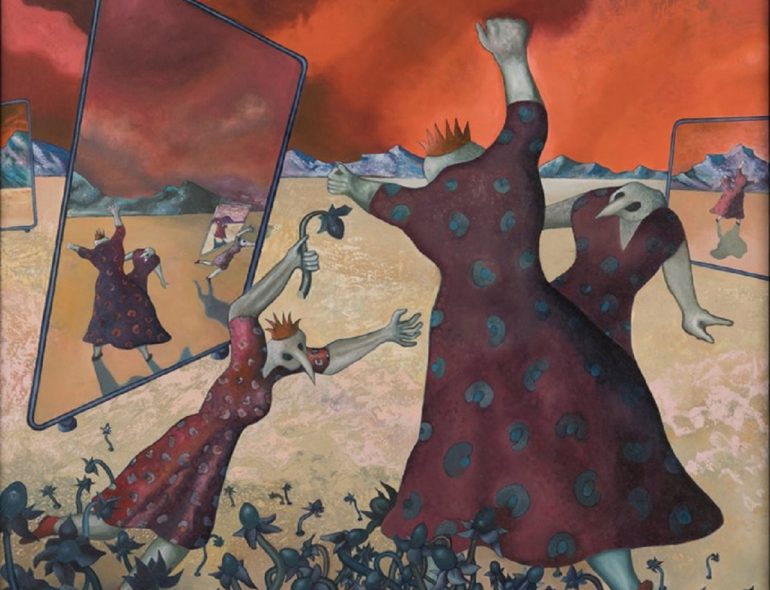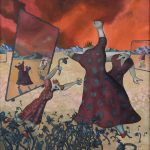In juxtaposing the familiar with the out of the ordinary, Pritchard creates surreal and unsettling deviations from the world we know. Fascinated by the illusional and psychological effects of shape, colour and pattern, he explores the metaphors that painting creates.
Ceri is the son of two of Wales’s foremost painters, Claudia Williams and Gwilym Prichard. His unique style explores iconography that combines decorative and representational forms. He believes that for him ‘the challenges of creativity are always rewarded by the element of the unexpected’. As he writes:
‘I have always been interested in consciousness in its various forms. When I paint I try to achieve a feeling of some other world, some other type of existence. I endeavour to make paintings that change one’s visual perception, to elicit a sense of wonder and anxiety at the same time.’
Ceri brings together human and animal forms. Other worldly figures stand in stark contrast to mundane household objects. In juxtaposing the familiar with the out of the ordinary, he creates surreal and unsettling deviations from the world we know. As writer and artist Neal Brown puts it:
‘Ceri Pritchard’s paintings are fascinating, not least for their extremity. They are resolute in their classically fantastical, surrealist conviction, and this can be a lonely position in the context of contemporary art […] His sense of this surrealist purpose, combined with a diligent work ethic, makes him a total example of painterly conviction.’
Ceri was born in Birmingham in 1954 and studied sculpture at Liverpool School of Art. After he received a BA in Fine Arts, he enrolled at Saint Martin’s School of Art. Ceri moved to France in 1980 where his work changed from the three-dimensional to the two-dimensional. Collage and photocopies were the starting point for his life as a painter. He debuted his new work at the Jon Gerstad Gallery in New York in 1986. Back in France, he produced a series of experimental videos before moving to Mexico. ‘My work reflects a constant changing life,’ he observes, ‘each country and place leaves an indelible mark, and a continually accumulating wealth of new and diverse influences and experiences.’





